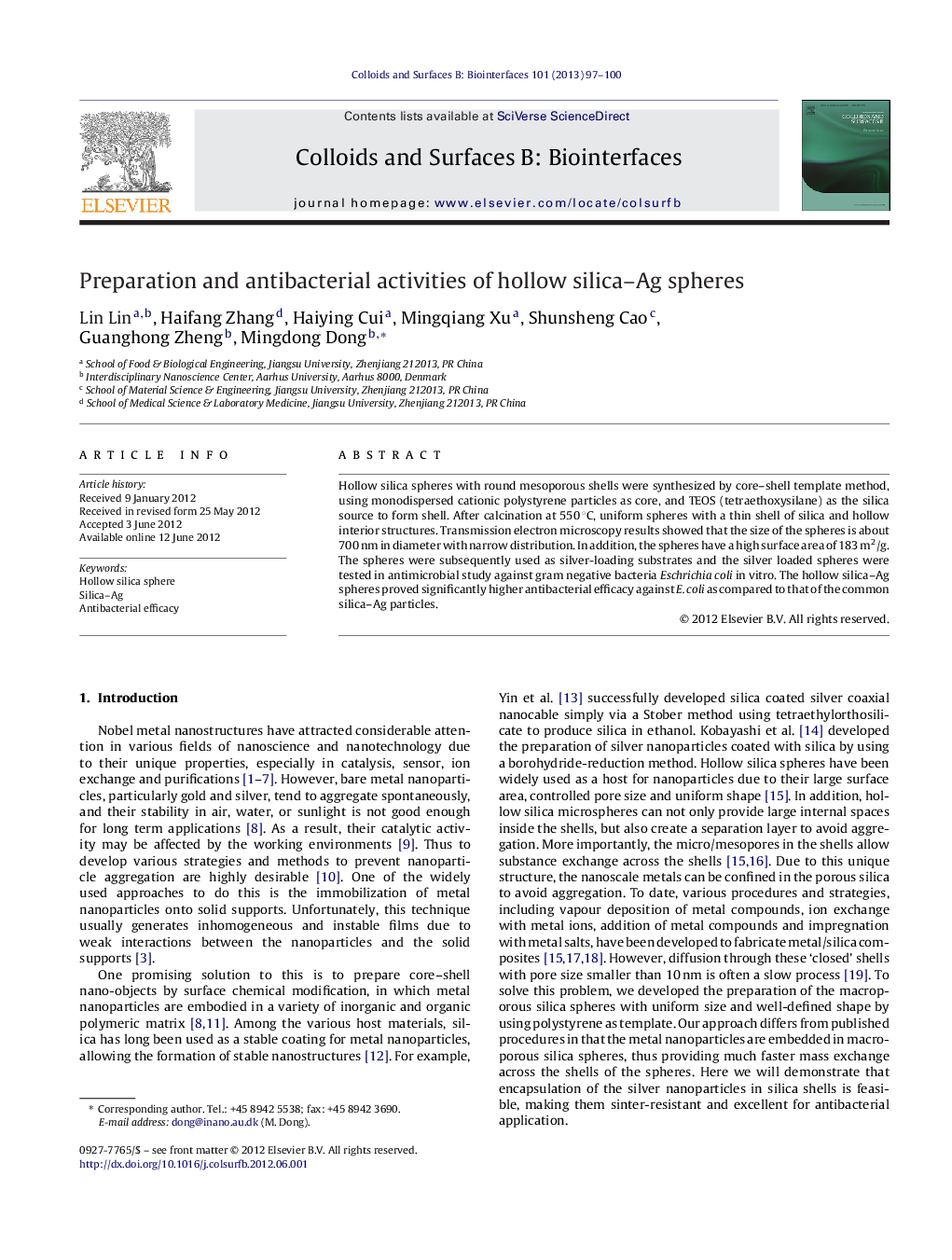| Article ID | Journal | Published Year | Pages | File Type |
|---|---|---|---|---|
| 600430 | Colloids and Surfaces B: Biointerfaces | 2013 | 4 Pages |
Hollow silica spheres with round mesoporous shells were synthesized by core–shell template method, using monodispersed cationic polystyrene particles as core, and TEOS (tetraethoxysilane) as the silica source to form shell. After calcination at 550 °C, uniform spheres with a thin shell of silica and hollow interior structures. Transmission electron microscopy results showed that the size of the spheres is about 700 nm in diameter with narrow distribution. In addition, the spheres have a high surface area of 183 m2/g. The spheres were subsequently used as silver-loading substrates and the silver loaded spheres were tested in antimicrobial study against gram negative bacteria Eschrichia coli in vitro. The hollow silica–Ag spheres proved significantly higher antibacterial efficacy against E. coli as compared to that of the common silica–Ag particles.
Graphical abstract. Silver-loaded hollow silica spheres with round mesoporous shells were synthesized for antimicrobial study against gram negative bacteria Eschrichia coli in vitro.Figure optionsDownload full-size imageDownload as PowerPoint slideHighlights► Silica–Ag spheres have mesoporous hollow silica spheres with high surface fabricated by core–shell template method successfully. ► The method will open the new possibilities for composite fabrications. ► On the other hand, the use of hollow silica–Ag spheres for antimicrobial study show significant antibacterial effect for bio-applications.
